5699 yuan! Fujifilm X-M5 camera launch: How can entry-level cameras survive?
![]() 10/15 2024
10/15 2024
![]() 437
437
Fujifilm is back with another new camera.
On October 14, 2024, Fujifilm unveiled the all-new X-M5 at the Summit 2024 Autumn Event, priced at 5699 yuan, solidifying its position as an entry-level mirrorless APS-C camera. This caught Lei a bit by surprise, as the last product in the X-M series was released in 2013. After an 11-year hiatus, what's Fujifilm's game plan with the relaunch of this product line?
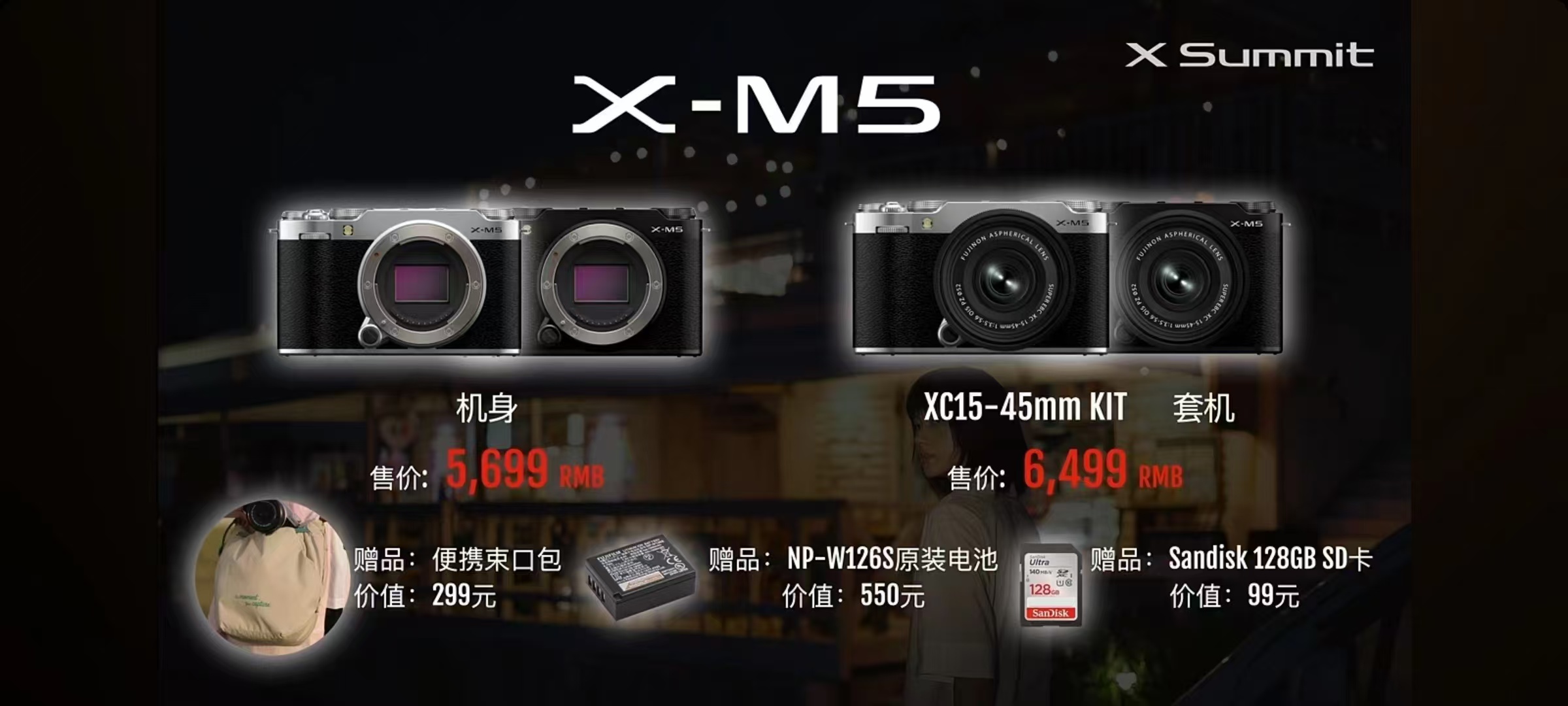
(Image source: Fujifilm official)
In terms of specifications, the Fujifilm X-M5 seems to offer a decent value proposition. With Fujifilm's rising brand popularity in recent years, could the X-M5 become a "scalper's delight"?
5699 yuan, is this the best value Fujifilm camera yet?
Putting aside the pricing, let's start with the hardware. The Fujifilm X-M5 is equipped with a 26-megapixel X-Trans CMOS 4 sensor and the latest X-Processor 5 image processor. Assuming no surprises, this CMOS is likely the same one found in the XS-20. While its image quality may not be groundbreaking for an APS-C sensor, it's more than adequate for social media sharing.
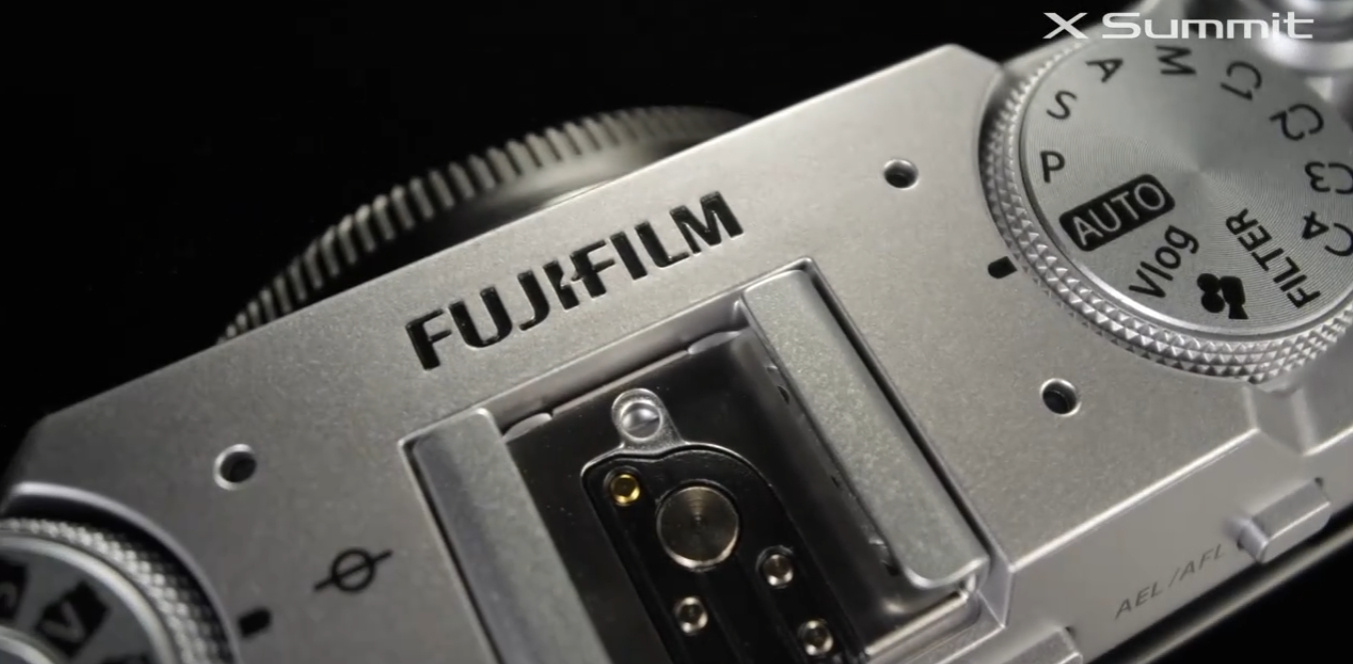
(Image source: Fujifilm official)
The X-Processor 5 image processor is a strong selling point, currently used in most of Fujifilm's new cameras. It offers faster autofocus, enhanced real-time image processing, lower power consumption, and more shooting modes. In a nutshell, it makes the camera more versatile and practical.
Thanks to this image processor, one of the X-M5's major selling points is its lightning-fast autofocus, rivaling even mid-range cameras like the XT5 and XH2. (Lower pixel density translates to faster processor calculations)
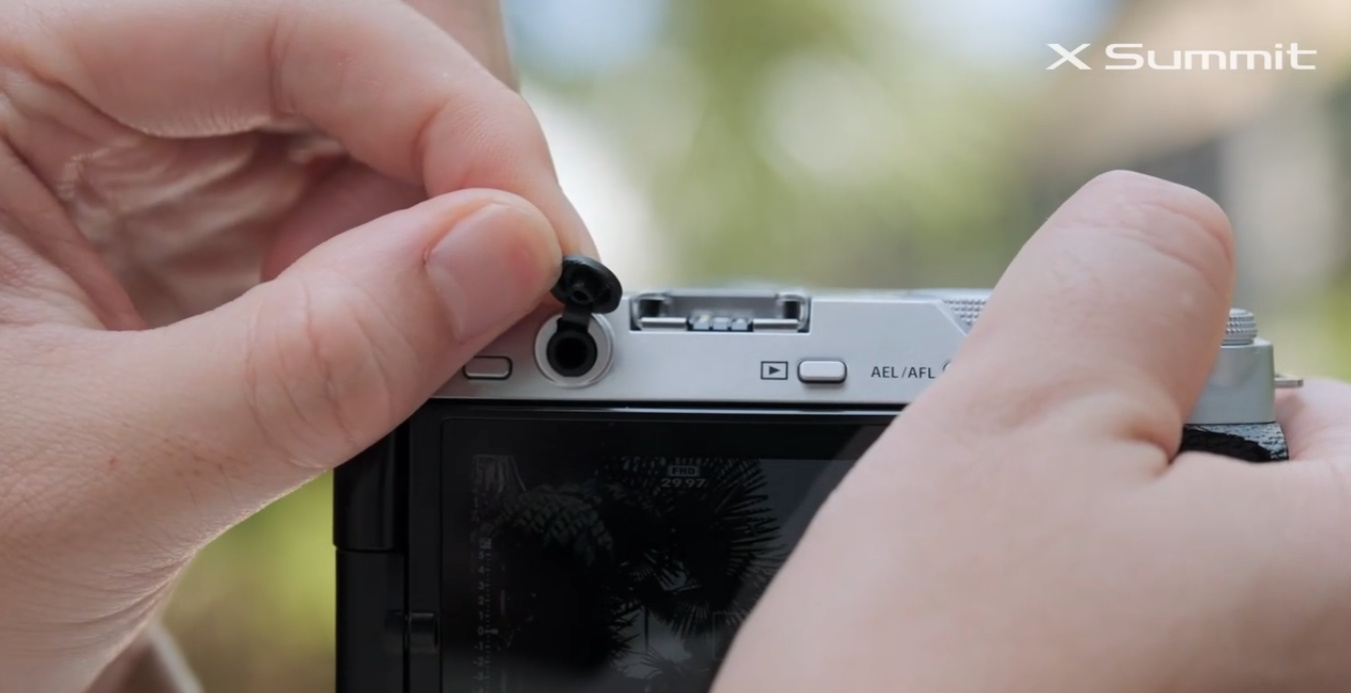
(Image source: Fujifilm official)
Regarding autofocus, Fujifilm cameras were once criticized for their slow and inaccurate focusing. The new generation processor addresses this, supporting subject detection AF with AI algorithms for birds, cars, trains, and more, in addition to traditional eye-tracking. This alone is a compelling reason for Fujifilm loyalists to upgrade.
However, if the X-M5 shares the same specifications as the XS-20, why would consumers opt for the more expensive XS-20? To differentiate the product lines, Fujifilm omitted in-body image stabilization (IBIS) from the X-M5, a significant drawback.
Without IBIS and lens stabilization, capturing sharp images in low light conditions becomes challenging, if not impossible.
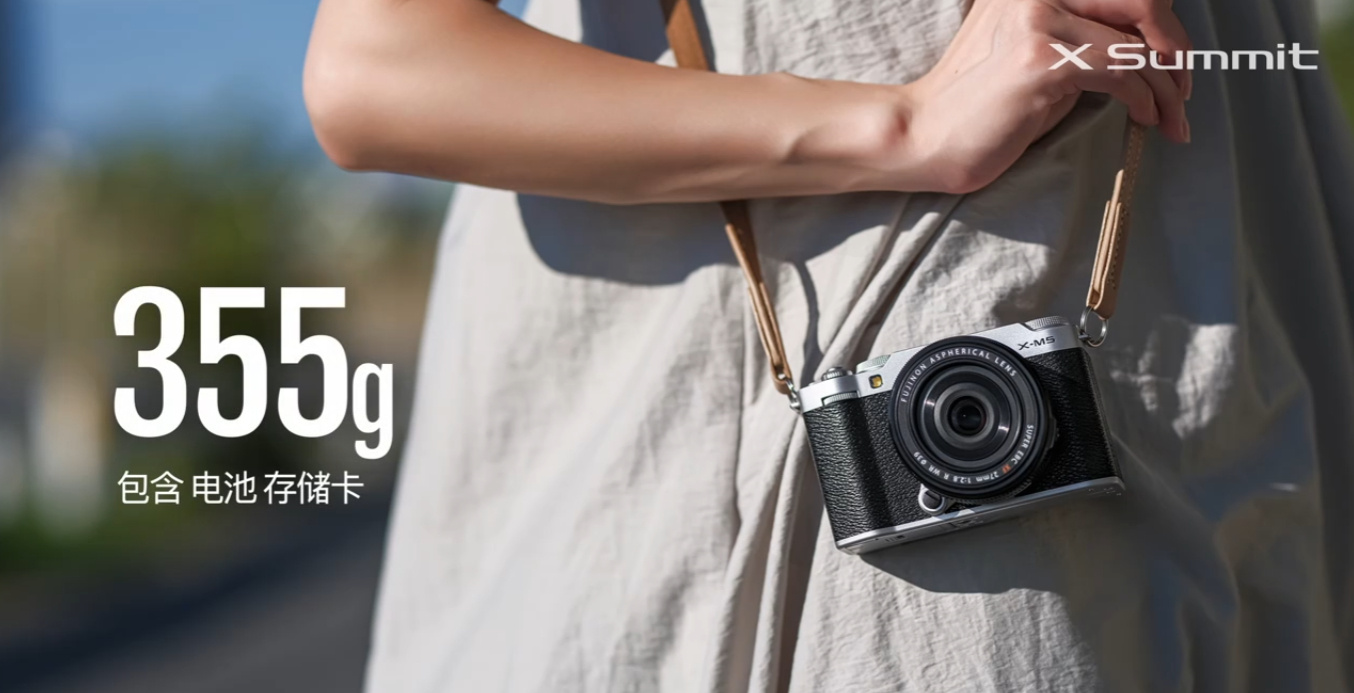
(Image source: Fujifilm official)
Design-wise, the Fujifilm X-M5 boasts a compact body, omitting the top flash and featuring a slightly smaller battery than the XS-20. Nonetheless, it adheres to the entry-level camera aesthetic. If priced correctly, it's a decent option for beginners, but Fujifilm's APS-C cameras are rarely available at MSRP, often selling for premiums well above list price.
With smartphone photography improving, how can entry-level cameras survive?
As a photography enthusiast, Lei is often asked by friends for camera recommendations under 5000 yuan. More often than not, he suggests they increase their budget for a near-flagship or a used flagship model from previous years.
The reason is simple: entry-level cameras offer limited experiences.
For instance, entry-level cameras are bulkier than one might expect, with subpar autofocus performance, especially at the edges. High-end cameras, on the other hand, excel in autofocus accuracy and coverage. Similarly, image quality differs significantly between entry-level and high-end cameras, particularly in low light conditions.
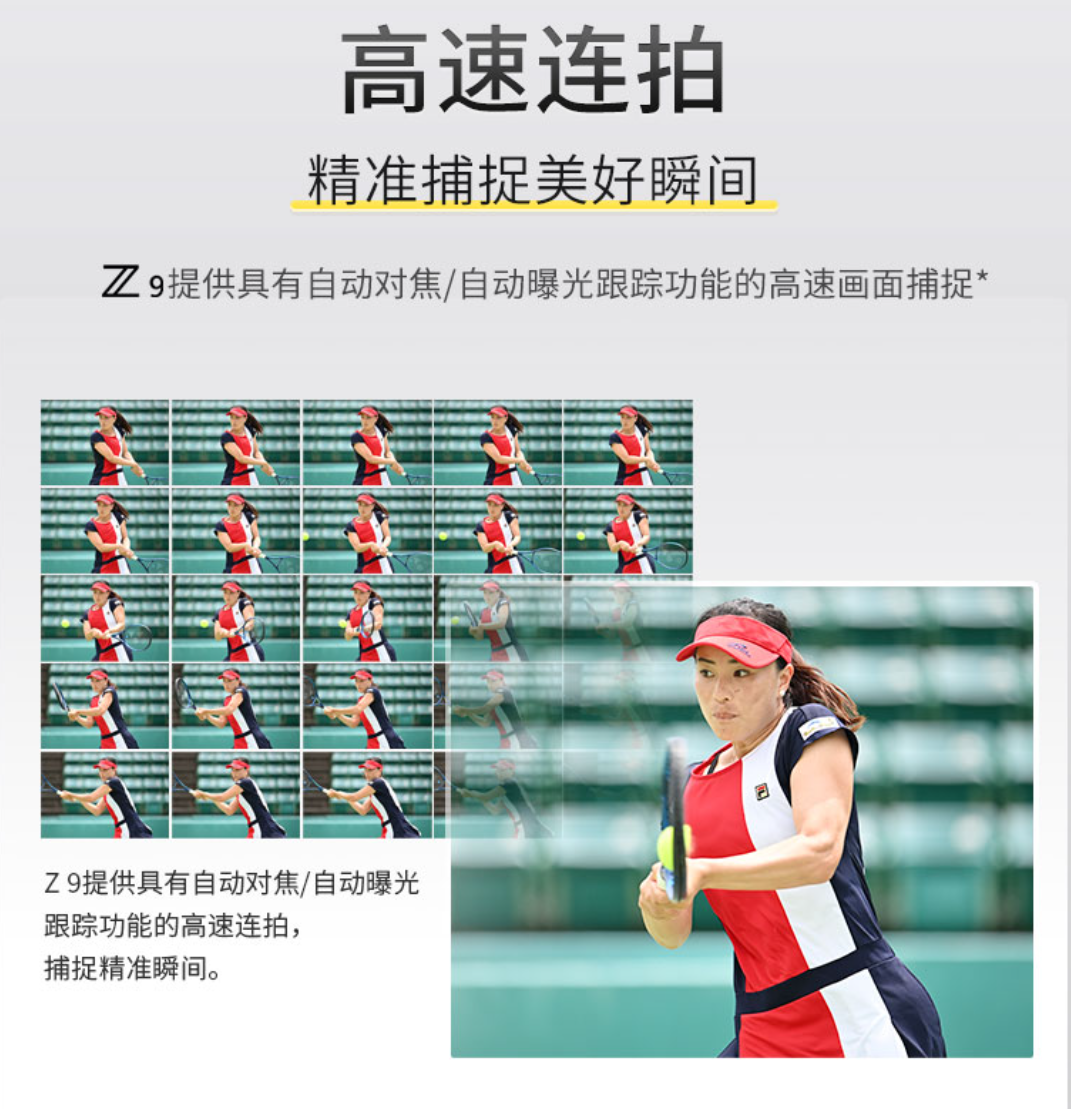
(Image source: Nikon official)
As beginners advance, they may require more professional gear or simply desire better image quality and faster autofocus. This evolution often happens within six months, forcing them to upgrade from an entry-level camera, an inefficient and costly process.
Entry-level cameras aren't entirely useless, though. They introduce beginners to photography basics, teach them shooting techniques, and provide comprehensive tutorials.

(Image source: Canon official)
Some photographers prioritize speed and portability over sensor size, making compact entry-level cameras an attractive option for quick snaps.
Frankly, Lei isn't optimistic about the Fujifilm X-M5 from a product perspective. While its pricing and specifications are reasonable, it's not ideal for beginners. However, from a market perspective, its success is inevitable. Today's camera market values more than just raw performance. Cameras are increasingly marketed based on non-traditional selling points, a trend that will persist for the foreseeable future.
Fujifilm's Core Competence: Simplifying Professional Imaging
Fujifilm's success stems from its aesthetic design and film simulations, positioning it as a top brand in the camera market.
Unlike the big three, Fujifilm appeals to the masses with its user-friendly designs. Most camera users are everyday people who capture life's moments, not necessarily pursuing professional photography or 8K/4K video. Fujifilm's lightweight bodies, intuitive film simulations, and low learning curve have made it a social media sensation.

(Image source: Fujifilm official)
Not all photographers have the time or inclination for post-processing and composition. Fujifilm's ability to deliver visually pleasing images with minimal effort is its key to success.
Fujifilm's core competence lies not in raw performance but in color management, portability, image quality, and system richness, drawing people to photography. Like modern smartphone cameras, Fujifilm democratizes photography, enabling anyone to capture satisfying images effortlessly.
The camera market is evolving, with performance no longer the sole priority. Consumers have more options than ever, and manufacturers are finding creative ways to differentiate their products. After all, designing an attractive body is easier than developing cutting-edge sensors and processors.
Source: Leitech








